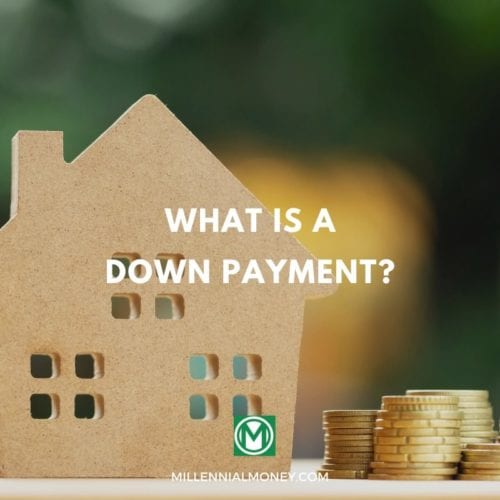Before you apply for a home loan, use a mortgage pre-approval calculator for an idea of what you can afford. The easiest way to get started is to head over to The Motley Fool’s mortgage payment calculator.
All you have to do is enter some information, such as your down payment amount and home price, to find out what your monthly mortgage payment might be.
The Motley Fool’s mortgage pre-approval calculator is just one of the many free online tools you can use to understand your buying profile. Read on for more information about what determines your monthly mortgage payment before calling a loan officer.
Key Factors in a Mortgage Pre-Approval Calculation
Here are some of the key factors to consider for your mortgage pre-approval calculation.
- Purchase price
- Down payment
- Mortgage interest rate
- Mortgage term
- Annual property tax
- Annual homeowners insurance
- Monthly HOA fees
1. Purchase price
One of the most important factors to consider is the home price, which can vary significantly depending on location, property condition, the property’s age, and the seller.
In most areas of the country, houses typically run from $150,000 to $500,000 or more. But don’t start hyperventilating: You don’t have to put the whole sum of money down at the time of purchase. That takes us to the next factor: your down payment.
2. Down payment
A home affordability calculator should also contain a field for your down payment, or the amount you plan to pay upfront. As you’ll see, your down payment amount will directly impact the overall mortgage.
The amount required for a down payment depends on the type of loan you’re applying for. In some cases (such as an FHA loan), you can put down as little as 3 percent.
3. Mortgage interest rate
You won’t know what mortgage rate you qualify for until you meet with a loan officer and get an official reading. However, it’s a good idea to play around with different figures ahead of time to see what your monthly payment may look like.
For example, according to Fool’s mortgage pre-approval calculator, a home price of $200,000 with a down payment of $20,000 and a 4 percent interest rate over a standard 30-year mortgage will yield an approximate monthly payment of $1,213.93.
However, bringing the mortgage rate down to 3.5 percent lowers the monthly payment to $1,163.68.
4. Mortgage term
It’s also important to factor in the loan term you’re signing up for. The longer your loan terms, the less you’ll pay each month — and the more you’ll wind up paying over the life of the loan due to interest.
The trick to optimizing a mortgage is to get the lowest interest rate possible for the longest loan term possible. By extending the amount of time on your loan, you can take the extra few hundreds of dollars per month that you save and put it into higher-growth investments that more than make up for your interest payments.
5. Annual property tax
You should also consider annual property taxes when determining your monthly payments. Taxes change annually and vary from place to place.
6. Annual homeowners insurance
When calculating your home cost, you’ll also want to consider home insurance. Annual home insurance usually runs anywhere from $800 to $1,000.
7. Monthly HOA fees
When determining your total monthly payments, another factor you’ll want to include is potential homeowners association (HOA) fees.
HOA fees usually cover things like exterior grounds and facilities maintenance, landscaping, and security. Some HOA fees can cost hundreds of dollars per month.
Key Factors That Impact Your Rate
Here are some key factors that impact your mortgage rate.
Credit score
Mortgage lenders take a hard look at your credit score to determine your ability to pay them back. For the best possible loan, you’ll need a credit score of 740 or higher. Anything lower could require you to pay more every month.
Learn More:
Employment history
Lenders also want to see your employment history. That way, they can get a sense of your income over time. So be prepared to supply previous W2 tax forms that indicate your annual gross income history.
Recent banking history
You must also be ready to show some of your recent bank statements. A mortgage is a lot of money, and lenders want to see that you aren’t bottoming out each month.
Frequently Asked Questions
Here are some of the most frequently asked questions about mortgage pre-approvals.
Should I factor in property management when calculating a mortgage cost?
It’s a good idea to factor in property management costs. These monthly expenses can vary, depending on the type of property you buy and the amount of work required to maintain it.
For example, be prepared to cover unexpected repairs such as broken toilets or lights. But you should also factor in at least a few thousand dollars annually for things like landscaping and routine maintenance.
Do you need to show your annual income when applying for a home loan?
Not only do you have to show your annual income, but you also have to show your income over time.
Round up your previous years’ tax returns, 1099s, W2s, and other documents to show the lender so they can get a better sense of your earning history and overall financial well-being.
What is mortgage refinancing?
A mortgage refinance involves swapping your current mortgage for a different one. This is typically completed a few years after you’re into a mortgage and making monthly payments.
Refinancing your mortgage can potentially save you thousands of dollars over the life of your loan.
Can you get a house with credit card debt or student loan debt?
When you apply for a mortgage, a lender will take a look at your overall debt-to-income ratio to get a sense of how much you’re paying in overall debt every month.
If your monthly debt payments are excessive, you may not be able to get a great rate on your loan. If you find yourself in this situation, try reducing your debt to improve your chances of securing a loan.
What is mortgage insurance?
Buyers who put down less than 20 percent on a down payment generally have to buy private mortgage insurance, which lenders require to protect against losses from a potential mortgage loan default.
In most cases, you won’t have to pay mortgage insurance when you have at least 20 percent equity in your property.
The Bottom Line
There are many factors at play during the home-buying process. And countless factors determine the overall amount you can expect to pay in homeownership.
Consider using The Motley Fool’s mortgage pre-approval calculator before meeting with a lender for a better idea of what you might expect to pay. That way, you can get a better sense of the loan payment you can afford.
Buying a home is a strenuous process. But with the right approach, patience, and determination, you’ll end up in a place you love.





No comments yet. Add your own